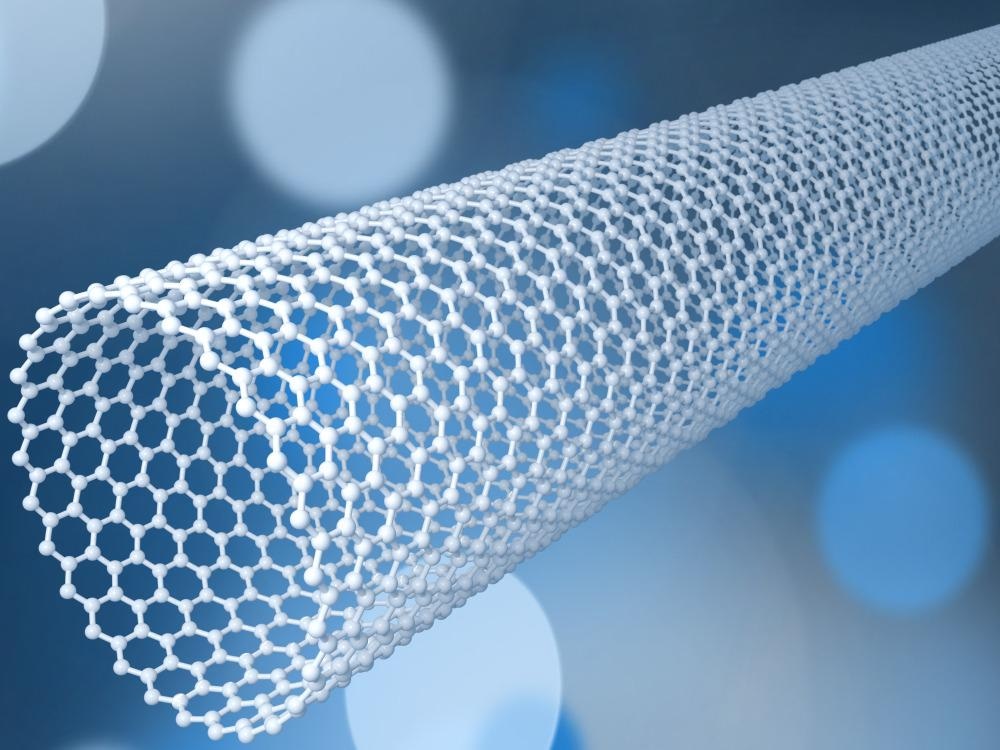A study published in the journal Materials Today Chemistry described a novel technique for the controlled production of metal-confined carbon nanotubes (M/CNTs) using self-modeled guanosine-based supramolecular gel (GSMG) nanoscale fibers.

Study: Controllable fabrication of metal-confined carbon nanotubes from the self-templated conversion of supramolecular gel nanofibers. Image Credit: ustas7777777/Shutterstock.com
Taking advantage of the excellent adjustability of GSMGs, it was shown that the addition of metallic sources (nickel and iron) to increase the material's durability and merely adjusting the KOH levels in the precursory substances improved the stability of the material.
The Untapped Potential of Supramolecular Gels
Supramolecule gels, which are created by non-covalent bonds between tiny molecules, are elastic and deformable soft substances with enormous promise in energy transformation and storage due to their customizable architecture, adjustable makeup, and functionality.
In suitable solvents, supramolecule gelators arrange themselves into microscale or nanoscale fibers, generating 3D frameworks.
The supramolecular gel-based three-dimensional matrix provides a multi-layer structure with a high specific area, offering a structural foundation for its usage in conduction systems to increase electron transport in electrochemical reactions.
Heat treatment of supramolecular gels has been proven in previous studies to be an easy way to produce novel energy compounds. Nonetheless, their low architectural integrity and repetitive fiber shape make scalable deployments difficult.
As a consequence, just a few works on the fabrication of functional substances employing supramolecular gel as a precursor have been published, and they all use carbon nanofibers (CNF) architectures.
Tunable carbon nanotube (CNT) synthesis via self-modeled conversion of supramolecular gel-based nanofibers has never before been described.
Synthesizing Metal-Constrained Carbon Nanotubes
Owing to their increased reactivity and structural integrity, CNTs, particularly metal-constrained carbon nanotubes (M/CNTs), are popular in the area of energy substances. Because of their distinctive hollowed nanoscale architecture and metallic nanoparticle enrichment, the interior chamber of M/CNT works as a furnace for energy storage and transformation.
Recently, research on the production and method planning of M/CNTs using standard synthesis techniques, such as arc discharge approach, wet chemical technique, chemical vapor deposition (CVD), and concurrent thermal decomposition technique, have been published.
However, these approaches have disadvantages such as inadequate precursor control and adjustment, harsh synthesizing settings, significant power usage, and imperfections in the final product.
As a result, a simple and viable technique with significant adjustability and ease of processing is required for the simple fabrication of M/CNT.
Details of the Experimentation
In this study, a novel synthesis technique for producing B, N-doped carbon nanotubes packed with NiFe alloy nanomaterials (NiFe/B, N-CNT) by straightforward self-modeled conversion of guanosine-based supramolecular gel (GSMG) nanoscale fibers was reported.
The architecture of GSMG nanofibers based functional compounds were selectively modified from metal-constrained solid CNF (M/CNF) to hollow M/CNT by synergistically functionalizing metal and KOH levels in GSMGs.
The combined impact of the particularly active NiFe alloy and hollowed CNT led to the strong electrocatalysis function of NiFe/B, NCNT towards the oxygen evolution process (OER). This technique offers a potential method for the easy and efficient production of functional CNTs.
Important Observations
After 1000 cyclic voltammetry (CV) repetitions, no variation was noticed, and the overpotential only rose from 355 to 373 mV, demonstrating the catalysts' adequate durability and endurance.
The creation of particularly active NiFe alloy catalyst spots and good conductance carbon nanotubes is related to the substantial increase in OER performance of NiFe/B, N-CNT-6. Furthermore, NiFe/B, N-CNT-6 outperforms the bulk of previously published OER catalytic materials in terms of catalysis performance.
To Conclude
To conclude, a breakthrough simple and successful synthesis technique was devised for B, N-doped CNTs packed with NiFe alloy NPs (NiFe/B, N-CNT) via self-modeled transformation of GSMGs.
The regulated transition of CNFs to CNTs was accomplished throughout the fabrication process by simply injecting Ni and Fe metals, preserving the shape of the gel throughout the pyrolytic procedure, and controlling the KOH level.
Significant electrocatalysis with a small overpotential was obtained by making use of the combined impact of NiFe alloy and CNTs in NiFe/B, N-CNT-6, and the benefit of a specific hollowed architecture. Thus, this study introduced a novel approach for the reasonable creation of architecturally adjustable gel-based multifunctional nanomaterials.
Reference
Liu, J., Gu, C ., Wang, M., Cui, Y., Li, J., & Liu, C.-S. (2022). Controllable fabrication of metal-confined carbon nanotubes from the self-templated conversion of supramolecular gel nanofibers. Materials Today Chemistry, 24. Available at: https://www.sciencedirect.com/science/article/pii/S2468519422000271?via%3Dihub
Disclaimer: The views expressed here are those of the author expressed in their private capacity and do not necessarily represent the views of AZoM.com Limited T/A AZoNetwork the owner and operator of this website. This disclaimer forms part of the Terms and conditions of use of this website.